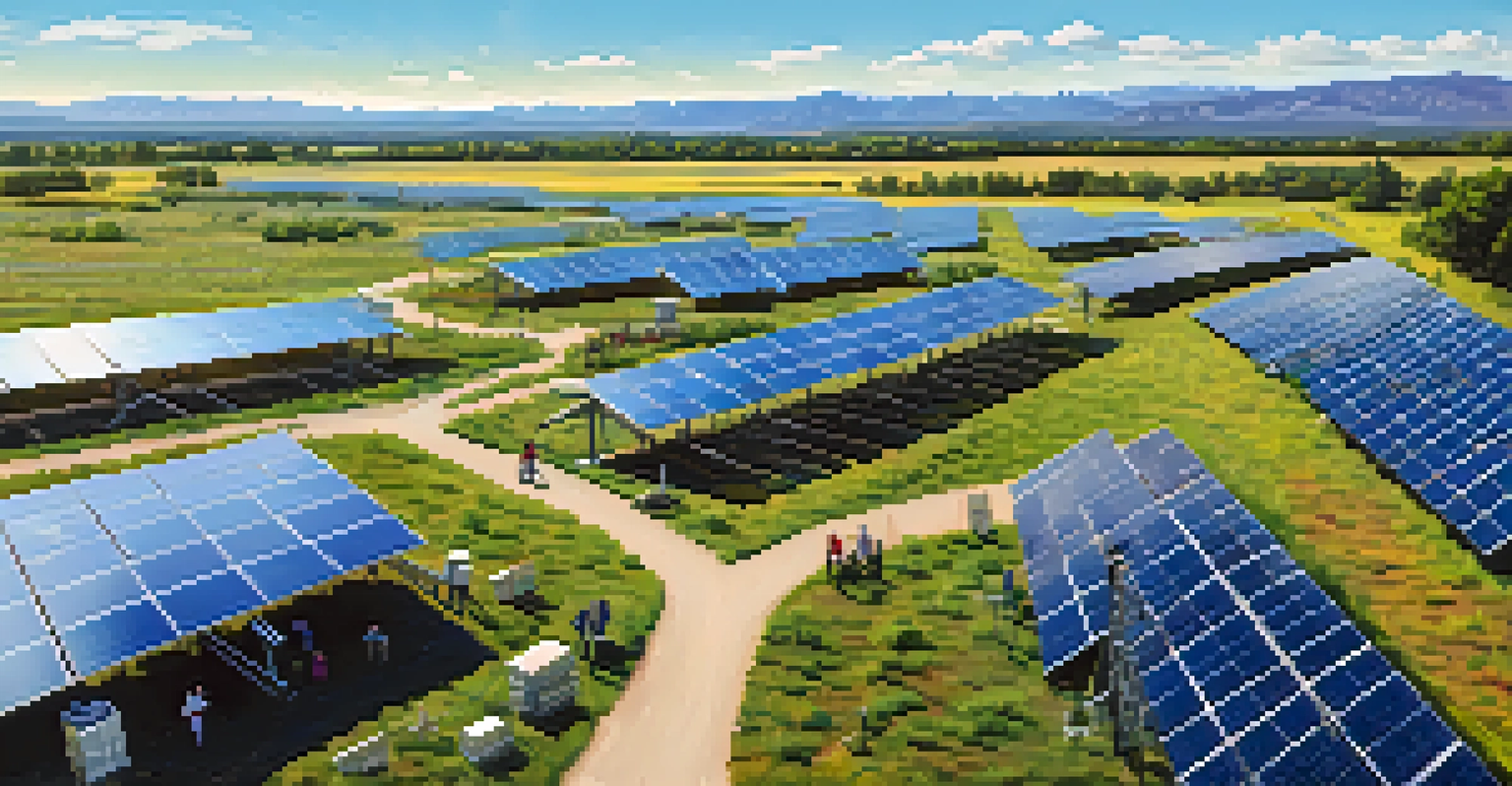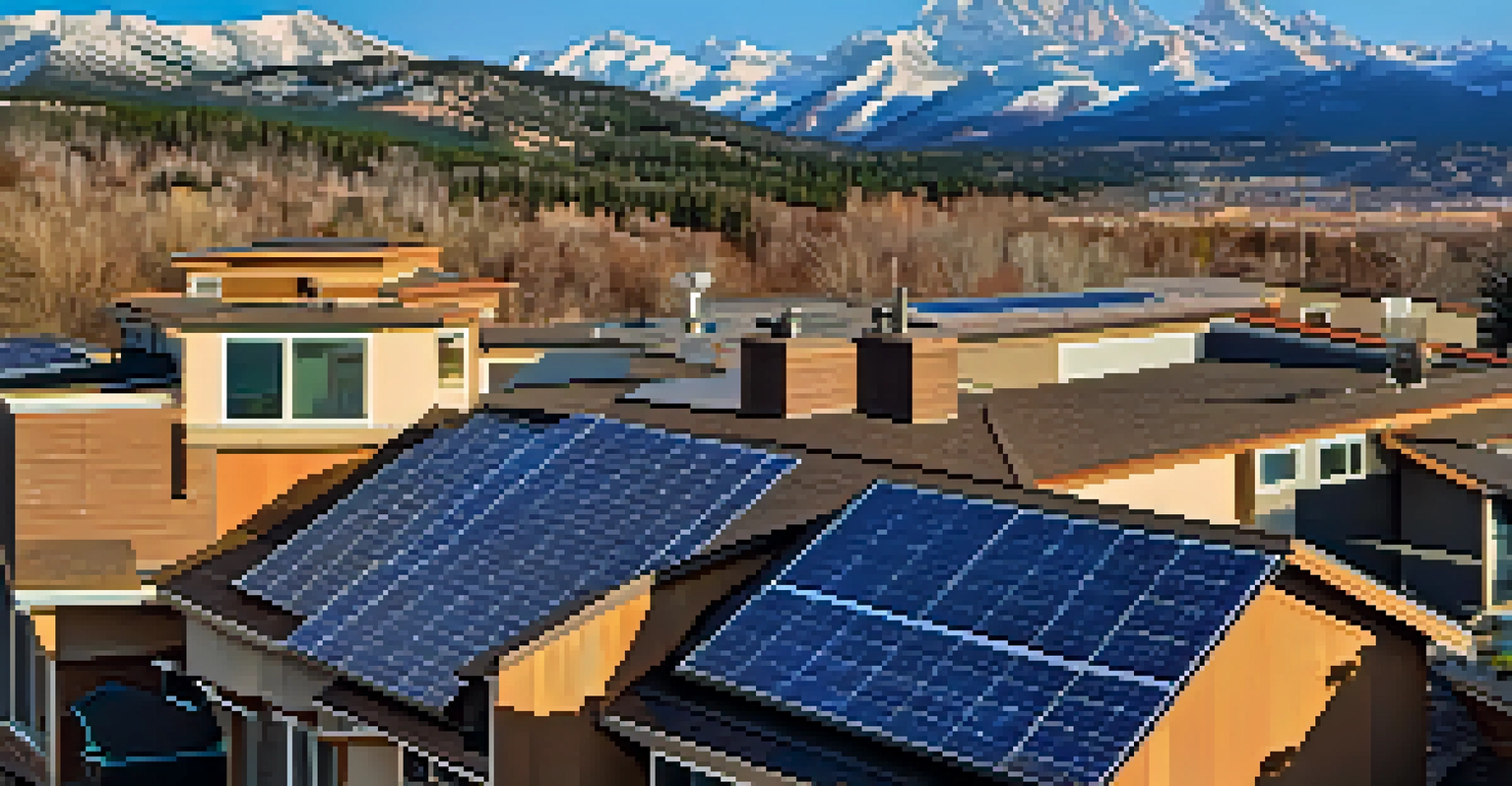The Role of Renewable Energy in Combating Climate Change in CO

Understanding Climate Change and Its Challenges
Climate change refers to significant shifts in global temperatures and weather patterns over time. These changes are primarily driven by human activities, such as burning fossil fuels, which release greenhouse gases into the atmosphere. In Colorado, we face unique challenges, from increased wildfires to altered water supplies, emphasizing the urgent need for action.
We do not inherit the earth from our ancestors; we borrow it from our children.
One of the most pressing challenges is the warming climate's impact on our natural resources and biodiversity. Colorado's pristine landscapes are at risk, with species struggling to adapt to rapidly changing conditions. As we witness these effects, it's clear that finding solutions is not just a necessity but a moral obligation.
In this context, renewable energy emerges as a potent ally in the fight against climate change. By harnessing natural resources like sunlight and wind, we can significantly reduce our carbon footprint and foster a more sustainable future. But how exactly does renewable energy play a role?
The Promise of Renewable Energy Sources
Renewable energy sources, such as solar, wind, and hydroelectric power, offer a cleaner alternative to fossil fuels. These technologies generate energy without depleting resources or emitting harmful pollutants. In Colorado, the vast plains and sunny skies make it a prime location for harnessing solar and wind energy.

For instance, wind farms in Eastern Colorado have become a common sight, tapping into the state's natural wind resources. These farms not only supply electricity but also create jobs and stimulate local economies, proving that transitioning to renewables can be both environmentally and economically beneficial.
Climate Change Demands Urgent Action
Colorado faces unique challenges from climate change, highlighting the urgent need for sustainable solutions.
Moreover, renewable energy contributes to energy independence. By reducing reliance on imported fossil fuels, Colorado can bolster its energy security while simultaneously combating climate change. This shift is essential as we work towards a greener future.
The Economic Benefits of Renewable Energy
Investing in renewable energy can lead to significant economic advantages for Colorado. As the demand for clean energy grows, so does the need for skilled labor in fields like solar installation and wind turbine maintenance. This demand translates into job creation, which is vital for local communities.
The greatest threat to our planet is the belief that someone else will save it.
Additionally, renewable energy projects often lead to lower energy costs in the long run. While the initial investment may be higher, the operational costs are typically lower compared to fossil fuel sources. This means that families and businesses can save money, further stimulating the economy.
The influx of investment in renewables can also lead to technological advancements. As companies innovate to improve efficiency and reduce costs, Colorado can become a leader in the renewable energy sector, attracting more businesses and talent to the area.
Policy Initiatives Supporting Renewable Energy
State and local governments in Colorado have recognized the importance of renewable energy in combating climate change. Policies such as renewable energy standards and tax incentives are designed to encourage the growth of the clean energy sector. These initiatives not only help businesses transition to renewables but also support consumers in making sustainable choices.
For instance, the Colorado Energy Office has been instrumental in promoting solar energy through various programs that make installations more affordable. Such initiatives empower homeowners to invest in renewable solutions, creating a ripple effect in local communities.
Renewable Energy Boosts Economy
Investing in renewable energy creates jobs and lowers long-term energy costs, benefiting local communities.
Furthermore, collaborative efforts between government, businesses, and community organizations are essential for driving this transition. By working together, stakeholders can promote awareness, share resources, and foster a culture of sustainability.
The Role of Technology in Renewable Energy Growth
Advancements in technology have revolutionized the renewable energy landscape, making it more efficient and accessible. Innovations such as improved solar panels and wind turbine designs have increased energy production while decreasing costs. This technological progress is crucial for meeting Colorado's growing energy demands sustainably.
Moreover, energy storage solutions, like batteries, have become increasingly important. They allow for the capture of excess energy generated during peak production times, ensuring a reliable energy supply even when the sun isn't shining or the wind isn't blowing. This technology enhances the resilience of renewable energy systems.
As we look ahead, continued investment in research and development will be vital. By fostering a culture of innovation, Colorado can maintain its competitive edge in the renewable energy sector and address climate change more effectively.
Community Involvement in Renewable Energy Adoption
Community involvement plays a pivotal role in the successful adoption of renewable energy. Local initiatives, such as community solar programs, allow residents to collectively invest in solar energy, making it more accessible for those who may not have suitable roofs. These programs foster a sense of ownership and responsibility towards sustainability.
Moreover, educational campaigns can raise awareness about the benefits of renewable energy. When individuals understand how their choices impact the environment, they are more likely to support clean energy initiatives. This grassroots movement can drive significant change at the local level.
Community Involvement Drives Change
Local initiatives and educational campaigns foster community engagement in renewable energy adoption, creating a cultural shift towards sustainability.
As communities unite to embrace renewable energy, they also contribute to a broader cultural shift. By prioritizing sustainability, residents can inspire neighboring areas to follow suit, creating a domino effect that enhances the collective effort against climate change.
The Future of Renewable Energy in Colorado
Looking ahead, the future of renewable energy in Colorado appears promising. With ambitious goals set by state leaders to achieve 100% renewable energy by 2040, the momentum is building. This commitment not only demonstrates leadership but also inspires other states to follow a similar path.
As technology continues to evolve and costs decline, more Coloradans will likely adopt renewable energy solutions. This transition will lead to a cleaner environment and a stronger economy, proving that sustainability and prosperity can go hand in hand.

Ultimately, the journey towards renewable energy adoption in Colorado is a collective effort. By working together—governments, businesses, and communities—we can combat climate change effectively and create a brighter, sustainable future for all.